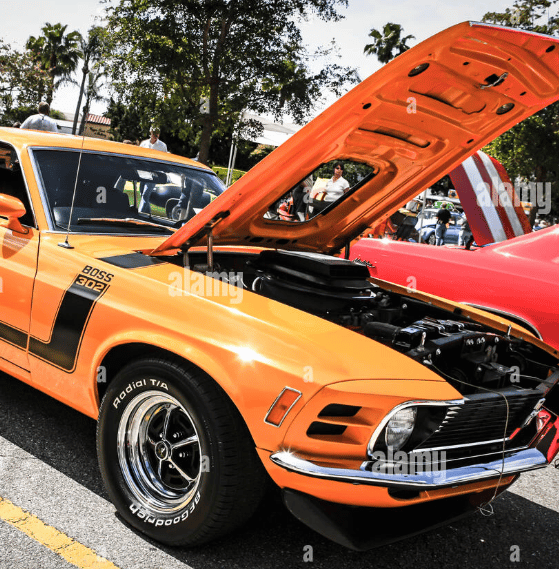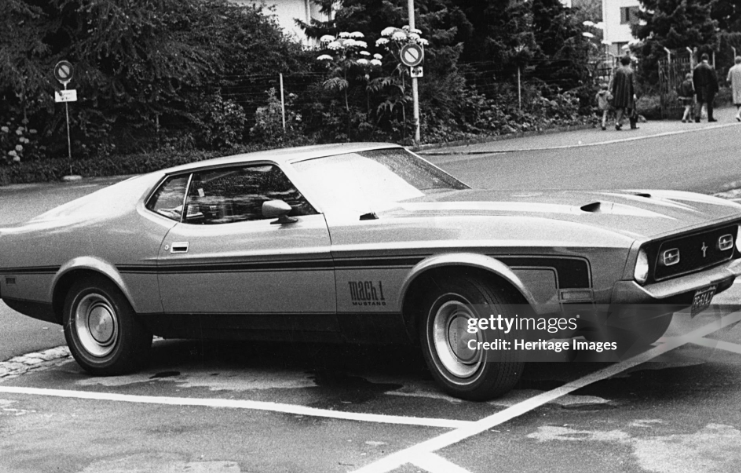Ford Mustang Boss 302
The 1974 Ford Mustang Boss 302 is an American muscle car icon, providing a classic combination of power, beauty, and performance. A member of the legendary Mustang family, the Boss 302 had a 5.0L V8 engine that provided a thrilling driving experience. While 1974 marked a shift in the Mustang’s design and performance due to changing regulations, the Boss 302 still retained much of the aggressive styling and powerful engine that defined its predecessors. In this blog, we’ll explore the history, design, and performance of the 1974 Ford Mustang Boss 302, and discuss why it remains a beloved model among collectors and enthusiasts.
MUSCLE
Unknowns
3/29/20255 min read


The Ford Mustang Boss 302
1. Ford Mustang II (Base Model)
The entry-level model in the 1974 Mustang lineup was a smaller, more refined version of the Mustang than its previous, more muscle-bound designs. It came with a variety of smaller engines, such as a 2.3L inline-four or a 3.3L inline-six, that prioritized economy and comfort over sheer power. This was a dramatic change from the muscle car era to a more practical design.
2.Ford Mustang Mach 1
The 1974 Mustang Mach 1 was still in the muscle car tradition, but it was sportier looking and more powerful than the standard models. It came with a 5.8L V8 engine and presented a more performance-oriented choice for Mustang buyers, but it was milder compared to the earlier, more intense models.
3.Ford Mustang Ghia
The Mustang Ghia from 1974 was the luxurious version of the Mustang line and had plush seats, sophisticated equipment, and an even smoother ride. It catered to shoppers who wanted a Mustang that reflected comfort and high-classness at the expense of the sheer excitement of the harder-core models.
The 1974 Ford Mustang: A Transition Period with Enduring Charm
The Ford Mustang has never been anything less than a cultural icon of American car life. First produced in 1964, the Mustang was a groundbreaking car that created the "pony car" category with its combination of performance, styling, and value. Over its existence, the Mustang has evolved in many different ways, reacting to the fluctuating tastes of car buyers and the demands of regulatory changes. Perhaps one of the more significant years for such changes was 1974.
The 1974 Ford Mustang experienced both a change in design and performance as the US automobile market grappled with constrictive regulations, fuel shortages, and changing consumer tastes. While 1974 closed the door on an era for the iconic Boss 302, it also represented the launch of several iconic models that would help set the tone for the future of the Mustang brand.
In this blog, we’ll explore the 1974 Ford Mustang lineup, highlighting the key models, the changes from previous years, and why the Mustang of this year continues to hold appeal among collectors and enthusiasts.
A New Era for the Ford Mustang
Before getting into the specifics of the 1974 models, it's worth noting the larger context. By 1974, the muscle car era was officially on its way out. Insurance rates were going up, emissions standards tightened, and the 1973 oil crisis (making fuel efficiency a growing concern) all contributed to the automotive scene's changes. Ford, as with many other manufacturers, had to evolve to meet the new market.
Consequently, the 1974 Mustang saw a complete redesign, stepping away from its former bigger, more muscular, muscle-car design. Instead, the Mustang began the age of the smaller, more fuel-efficient vehicles, answering the call of the new driver generation. This was the beginning of the Mustang II, which took the place of the bigger, more muscular 1973 Mustang model.
Although the 1974 Mustang was not longer the high-powered muscle car of its earlier heyday, it still retained its heritage and a spirit that helped make the Mustang such a wonderful automobile. There are three remarkable models in the 1974 Ford Mustang offering.
1. Ford Mustang II (Base Model)
The Ford Mustang II was the entry-level model in 1974, a radical break from the performance-oriented, muscle car philosophy of earlier Mustangs. With its smaller and less massive size, the Mustang II appealed to purchasers who prioritized fuel efficiency, functionality, and a smoother ride.
The entry-level Mustang II came with a 2.3L inline-four or a 3.3L inline-six engine, providing respectable but smaller horsepower ratings compared to the V8s of the previous generation of Mustangs. The 4-cylinder motor made the vehicle much more fuel-efficient, making it more attractive to a public that was increasingly focused on economy and functionality over outright power.
Although the Mustang II did not have as much brute power as its forebears, it still possessed many of the typical Mustang traits—sex appeal, comfort, and an inescapable driving charisma. The smaller size and more refinement-friendly focus made it an ideal vehicle for city life, where space and efficiency of fuel were key concerns for many motorists. Even though its performance was less strong, the Mustang II's look, with a more rounded and curvy profile, was nevertheless recognizably a Mustang. This car would serve to assist the Mustang in keeping its presence in the marketplace at a period of significant transition within the motor industry.
2. Ford Mustang Mach 1
Although 1974 was a turning point in the history of the Mustang, the Mustang Mach 1 retained much of the brand's performance heritage. The Mach 1 had been a part of the Mustang stable since the late 1960s, featuring sportier looks and performance equipment than the regular models.
For 1974, the Mach 1 got some significant upgrades. It came with a 5.8L V8 engine, providing a decent level of horsepower and performance for the era. Although the 1974 Mach 1 was less powerful than the previous models of the vehicle, it still provided a fun driving experience, particularly when compared to the standard Mustang II. The Mach 1 featured unique trim, an upright stance, and raised suspension, making it provide a sporty driving experience on the highway.
While not technically a muscle car per se like the previous Boss or Shelby versions, the 1974 Mach 1 was able to preserve the performance-driven persona of the Mustang brand in slightly more restrained fashion. It was an excellent choice for those desiring the aesthetic and feel of a performance car but with slightly more modest fuel usage and more comfortable driving characteristics than the previous versions.
3. Ford Mustang Ghia
The Mustang Ghia was the luxury trim in the 1974 line, designed for purchasers who desired a more refined, cushy driving experience without the loss of the stylish appeal of the Mustang image. The Ghia was so named after the celebrated Italian coachbuilder Ghia, which had styled the car's elegant look and luxurious interior.
The Mustang Ghia was equipped with higher-end features such as premium upholstery, improved interior materials, and a more advanced overall design. In contrast with the Mach 1 or the base model, the Ghia was less concerned with offering raw performance and more concerned with offering comfort, luxury, and style. It used engines like the 3.3L inline-six or the more powerful 5.0L V8, depending on what the buyer was willing to accept.
The Ghia model appealed to those who wanted a Mustang that provided the same stunning appearance and driving pleasure but with more emphasis on comfort and luxury. It was a great option for Mustang customers who were not necessarily seeking a performance vehicle but wished to enjoy the Mustang's individual personality in a more sophisticated package.
The Legacy of the 1974 Ford Mustang
Although the 1974 Ford Mustang may not have possessed the brute power and scary performance of previous Mustangs, it is still a vital piece of the Mustang's storied past. It was the last of the muscle cars and the first of a new, smaller and more fuel-conscious era for the venerable American automobile.
The Mustang II model, specifically, played a crucial role in keeping the Mustang in the picture during a difficult time for the automotive market. While its engines were smaller and weaker, the design and popularity of the Mustang II allowed the Mustang to weather the shifting tides of the 1970s.
Today, the 1974 Ford Mustang occupies a cherished position in the hearts of collectors and enthusiasts who love it for what it was: a turning point that enabled the Mustang to keep its tradition while adjusting to the demands of the era. Whether it's the base model with its tiny footprint, the Mach 1 with its more aggressive stance, or the high-end Ghia, the 1974 Mustang reminds us that the essence of the Mustang isn't necessarily about horsepower—it's about style, personality, and the joy of driving.




